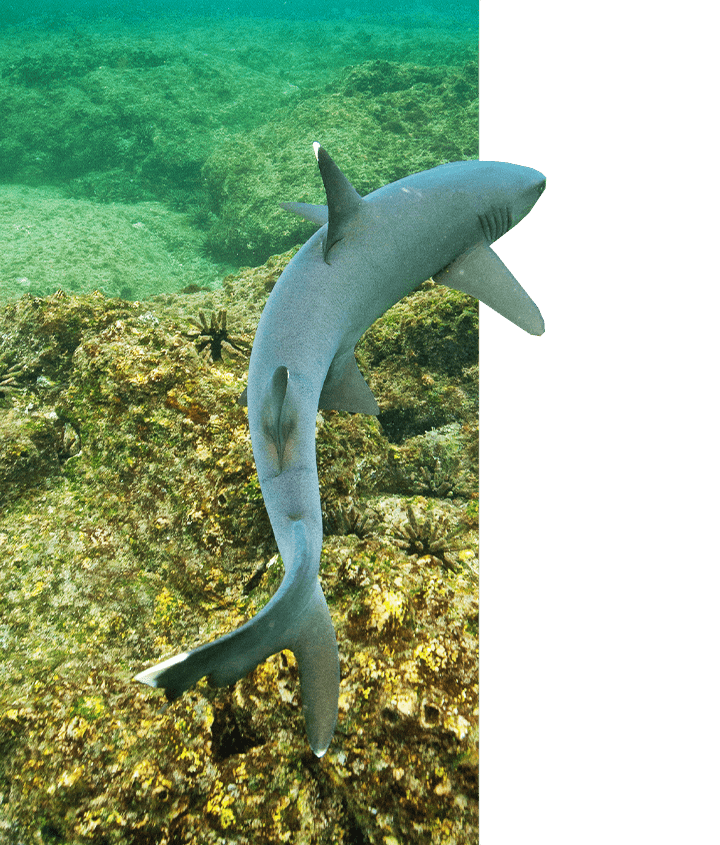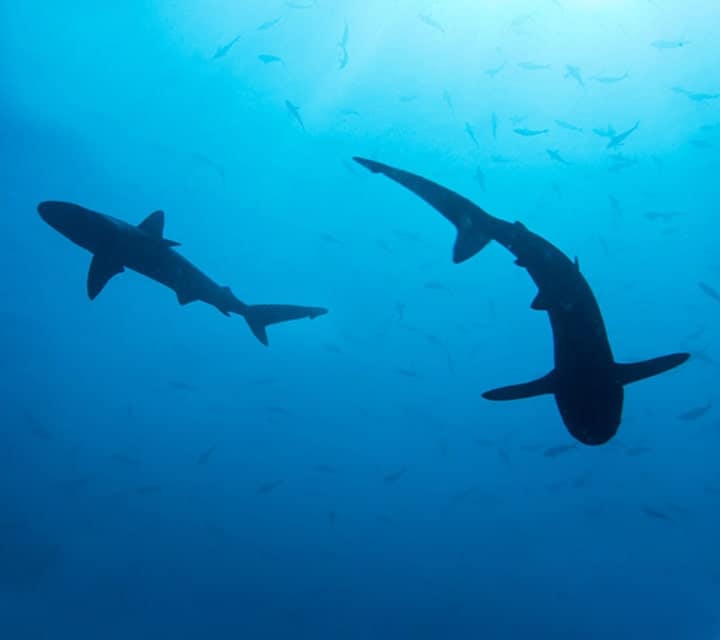
Whether it’s the 1975 classic Jaws, or the chuckle-inducing Finding Nemo of 2003, the overarching theme you’ll find in Hollywood depictions of oceanic life is the inherent threat of—you guessed it—sharks. Although there are over 500 shark species, ranging widely in size, habitat preference, and disposition, there is an unfortunate human tendency to make the generalization that all sharks are dangerous.
Because of the immense biodiversity and unique convergence of cold currents and tropical water temperatures, the Galapagos Islands are an ideal habitat for many types of sharks. In fact, 32 different species have been recorded in the Galapagos waters. By no means does this make the waters unsafe. In fact, with the proper approach and guidance, snorkeling and diving in the presence of sharks can be both safe and tremendously fun!
Since accounts of shark attacks were first recorded in 1854, there have only been a total of eight incidents of shark-related aggression in the Galapagos Islands, and only three involving tourists. To date, there have been zero fatalities as a result of shark attacks in Galapagos waters. Nevertheless, it is prudent to approach shark interactions with a certain amount of caution. You’ll want to respect a shark’s space and avoid exhibiting any kind of threatening or agitating behavior. Snorkeling and diving with an experienced guide is always recommended, as they can recognize when a shark is feeling distressed. These sea creatures are naturally inquisitive, so they may approach you just to learn a little more.
While the Galapagos are a true deep sea diver’s paradise, offering encounters with the leviathan Galapagos Whale Sharks and large schools of hammerheads, these dive trips travel far off the map to Wolf & Darwin Islands in the northwest of the archipelago. Conversely, it is fairly rare to see sharks while snorkeling during a naturalist trip. You are most likely to see white-tipped reef sharks that like to sleep on the bottom and in caves. They feed on small fish at night and are very docile. There are a few places on our naturalist trips where the guide can take you to a location where you can dive with larger sharks like hammerheads, but only if you really want to as it is out of the way. If you are on a naturalist cruise and want to see sharks, we can help you arrange dive trip with a land based outfitter who takes divers to these locations.

For travelers experienced in diving, cruises in the Galapagos present an opportunity to see the largest shark biomass in the world. While the Galapagos are a true deep sea diver’s paradise, offering encounters with the leviathan Galapagos Whale Sharks and large schools of hammerheads, these dive trips travel far off the map to Wolf and Darwin Islands and run on the expensive side.
For a more economical choice, naturalist day tours allow for snorkeling opportunities with chances to spot a wide range of shark species. You are most likely to see the white-tipped reef sharks that like to sleep on the ocean floor and in caves. They feed on small fish nocturnally and are very docile. Guides on these naturalist trips are experts and can, on request, bring you to locations with a higher chance of diving with larger sharks like hammerheads. arge schools of hammerheads, these dive trips travel far off the map to Wolf and Darwin Islands and run on the expensive side.
Quasar Luxury Cruise trips offer snorkeling for the new and experienced. For Quasar travelers interested in diving excursions, we are more than happy to assist in arranging a dive experience guided by local experts. Whether you are a shark enthusiast, or would rather keep your distance, a Quasar Expedition can get you as close to these wondrous sharks as your comfort allows.
Explore some of our Galapagos luxury cruise options and we’ll supply the snorkel!


